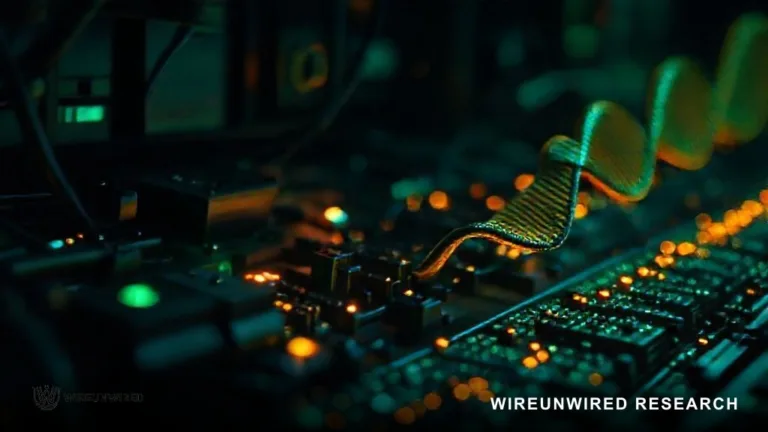Key Insights
- C++ fundamentals, concurrency, and real-world system challenges are central to AMD’s technical interview process in 2025.
- Expect deep dives into memory management, parallel programming, and performance optimization—not just standard coding problems.
- Understanding graphics pipelines and GPU architecture basics is increasingly valuable for candidates targeting AMD’s graphics division.
A recent surge in demand for high-performance graphics and compute solutions is transforming the skills companies like AMD seek in graduate software engineers. As AMD continues to push the frontiers of GPU and CPU development, their interview process now emphasizes not only algorithmic problem-solving but also deep expertise in C++ programming, concurrency, and real-world system design. Here’s what candidates can expect, and how the broader tech landscape is shaping these requirements.
C++ Fundamentals and Memory Management: The Core of the Interview
AMD’s software engineering interviews in 2025 are rigorous, with a heavy focus on C++ fundamentals—a necessity for performance-critical graphics work. Candidates should be prepared to:
- Demonstrate mastery of RAII (Resource Acquisition Is Initialization), smart pointers, move semantics, and template metaprogramming.
- Reason through complex memory management scenarios, including stack vs. heap allocation, and identify memory leaks or undefined behavior in sample code.
- Discuss trade-offs in using raw pointers versus modern C++ abstractions, a topic that has grown in importance with the evolution of C++ standards and AMD’s move toward safer, more maintainable code bases.
Industry reports confirm that companies like AMD are increasingly prioritizing candidates who can balance low-level performance with high-level code safety, especially as modern GPUs become more complex and multi-threaded. According to Interview Query’s 2025 guide, questions often probe a candidate’s ability to optimize for both speed and resource efficiency—skills essential for next-generation graphics drivers and compute workloads.
Concurrency, Parallelism, and System-Level Thinking
With the rise of multi-core processors and parallel graphics workloads, AMD’s interviews now consistently include deep dives into concurrency and parallel programming.
- Expect questions on mutexes, condition variables, atomics, and the identification of race conditions or deadlocks in code samples.
- Interviewers may present buggy concurrent code and ask candidates to debug it, reflecting real-world challenges in graphics driver development.
- Knowledge of cache coherency, memory ordering, and lock-free programming is increasingly valued, aligning with industry trends toward highly parallel, thread-safe systems.
Recent video interviews and candidate reports highlight that AMD prefers candidates who can articulate how concurrency issues affect real-time graphics rendering and system stability. For example, understanding how a poorly managed thread can stall a graphics pipeline or cause resource contention is now considered a core competency. As the AMD Interview Questions and Answers for 2025 video explains, being able to reason through these scenarios—not just recite definitions—sets top candidates apart.
Domain Knowledge: Graphics Pipelines and GPU Architecture
While data structures and algorithms (DSA) are still part of the interview, AMD’s graphics division places increasing emphasis on domain-specific knowledge:
- Expect questions about the graphics rendering pipeline, resource management, and the basics of GPU architecture.
- Be ready to discuss how you would optimize code for parallel execution on GPUs, or how you’d handle bottlenecks in a graphics pipeline.
- Having experience with GPU programming frameworks (such as CUDA, HIP, or OpenCL) is a plus, but demonstrating a quick learning curve and conceptual understanding is equally important for new graduates.
As highlighted by real interview experiences and recent industry commentary, AMD is seeking engineers who understand both the theoretical and practical aspects of graphics computation. This includes the ability to discuss how memory bandwidth, cache hierarchies, and synchronization primitives impact the performance of real-time rendering systems .
You would love to read : How to Land an ECE Internship and FTE at Tesla or SpaceX: What You Need to Know ?
Emerging Interview Trends and Preparation Strategies
The competitive landscape for graphics and compute talent is driving new trends in technical interviews:
- Real-world debugging scenarios: Candidates are often shown segments of buggy concurrent code and asked to identify and fix issues—mirroring day-to-day challenges at AMD.
- System design discussions: Expect to reason about the architecture of a graphics subsystem or memory management strategy, rather than just coding algorithms in isolation.
- While LeetCode-style DSA problems (medium difficulty) remain relevant, AMD’s focus is shifting toward holistic system understanding and the ability to write clean, efficient, and maintainable C++.
For those preparing, a balanced approach is best:
- Brush up on C++ fundamentals, especially modern features and concurrency primitives.
- Review key graphics concepts and be prepared to discuss your experience with performance optimization—even if only in academic projects.
- Practice debugging multi-threaded code, as this reflects real engineering challenges in graphics software.
With the continued evolution of GPU technology and the growing complexity of graphics drivers, AMD’s interview process is a reflection of the state-of-the-art challenges facing the industry. Candidates who demonstrate not just technical proficiency, but also a strong grasp of system-level thinking and domain-specific knowledge, will have a clear edge in 2025 and beyond.
Discover more from WireUnwired Research
Subscribe to get the latest posts sent to your email.




